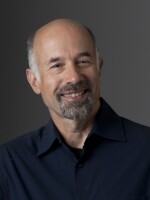Watch the opening scenes of George Lucas's 1973 classic American Graffiti, and you will catch glimpses of my hometown, San Rafael, California, as it flits past the windshields of the classic cars that serve as the real set of this movie. As the film opens, Steve, played by Ron Howard, and Curt, played by Richard Dreyfuss, are whiling away their last night home before leaving for college back east. Curt is plagued by doubts, and Steve has to speak a little courage to him. "We're finally getting out of this turkey town and now you want to crawl back into your cell, right? You just can't stay 16 forever! You've got to get that into your head!"
What is it about this "turkey town" that makes it so confining? We never really learn that. We just know that this place, a composite of San Rafael and a bunch of other Bay Area burgs, is nowhere. It is a cultural backwater that drowns anyone who stays there past high school. Take the character John Milner, the town's dominant drag racer. Just out of high school, he's already beset by nostalgia for a mythic past. He can still remember the time when it took a whole tank of gas to cruise the main drag. Even though there's still plenty of action on the strip, it's just not the same.
That sense of nostalgia is why we went back to the strip for our series "On Location," which looks at the places where movies are filmed, and the ones they evoke. American Graffiti was shot in small towns in Northern California, but its real stage is those lanes of blacktop.
So our heroes spend a restless night driving up and back, hooking up, looking for love, searching for some excitement. They have to keep moving, to get to that special place that they never find. It's a familiar feeling to me, and the guy I used to drive around with in high school, Rob Pollock.
Rob and I recently got together for the first time in about 25 years, for a memorial cruise up Fourth Street, to remember our endless wild-goose chases, for the elusive party we had heard was going on somewhere nearby. Usually, it wasn't clear whether there was a party to find, and often as not our drive led us in circles. But the search was all that mattered. If we sat still, we might as well sleep through our youth.
By the time Rob and I could drive, cruising was already in decline. Muscle cars drink a lot of gas, and it's tough to cruise in your mom's Toyota. When American Graffiti came out in our senior year, the movie actually reintroduced cruising, like an extinct plant returned to its native habitat. As Rob recently remembered during our reprise tour, the summer after the movie's premiere, San Rafael's main drag was clogged with cars seeking to reenact the movie's cruising scenes. But soon, the police shut cruising down, and the downtown was left to its inexorable decline.
American Graffiti had that effect in a lot of places, like Petaluma, where most of the film was actually made.

Petaluma is now the staging ground for an annual tribute to the film, full of classic beauties, like a cherry red 55 Chevy pickup that sits in the driveway of John Furrer, who helps organize the American Graffiti event. Furrer likes to give tours of spots where key scenes were filmed, like the final race on Paradise Road.
That race ends in a fiery crash that humbles both racers and helps convince the character of Steve to put off college, and stay with his hometown girl. John Furrer knows that feeling. Like the main characters, Furrer felt the pressure to leave town and go to college. But after two weeks, he turned around and came back. "I wasn't ready to leave home," Furrer says. "Kind of like Ron Howard in the movie, where he wanted to, he was ready to, he thought he could do everything. But yet there were too many things holding him back: his girlfriend, that kind of stuff. And that's kind of what happened with me."
Furrer married, settled down in Petaluma, and appears happy as a clam here.
In the movie, the character of Curt needs a major shove before he follows his destiny to leave this joint. Curt seeks out legendary DJ Wolfman Jack in a lonely radio studio, in hopes of getting a message to the mysterious blonde he has spotted. The Wolfman helps him find that girl, but he also gives Curt some advice. "There's a great big beautiful world out there," he tells him, and convinces the young man to go explore it.
Curt follows that call, and gets on a plane.
This movie, most movies, portrays this as the courageous choice: get out of town. But as we are reminded in the film's final scene, leaving your hometown doesn't change everything. John Milner, the racer, tells Curt, "You probably think you're a big shot, going off like this. But you're still a punk."
That is one undeniable fact I'm reminded of when I go home — no matter how far away you roam, your first step on home territory turns you back into that sniveling punk you were in high school.
Copyright 2020 NPR. To see more, visit https://www.npr.org. 9(MDAxNDQ2NDAxMDEyNzU2NzM2ODA3ZGI1ZA001))




